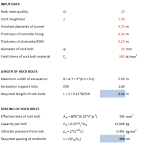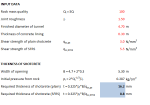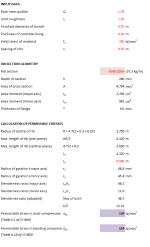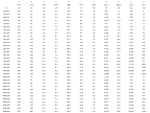Tunnel Support Design
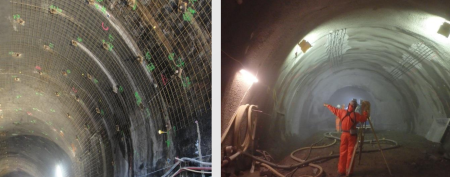
Description
This excel sheet discusses the calculations of tunnel support like rock bolt design, shotcrete calculations, steel ribs design, etc. based on Indian codes.
Indian codes have specific guidelines for tunnel support design, including rock bolts, shotcrete, and steel ribs. The Indian standard codes that are relevant to tunnel design and construction are:
- IS: 12070 (1987) - Guidelines for Design and Construction of Shallow Tunnels in Soil and Soft Rock
- IS: 1888 (1982) - Method of Load Test on Soils
- IS: 9179 (1979) - Criteria for Design of Steel Liner for Steel Penstocks
While the Indian codes do not have specific guidelines for rock bolts, shotcrete, and steel ribs design, they can still be designed using international guidelines and adjusted to meet Indian conditions. Here is a general overview of the calculations for each type of tunnel support:
-
Rock bolt design: Rock bolts are used to reinforce the rock mass around a tunnel and provide additional support. The design of rock bolts involves the determination of the bolt length, spacing, and capacity. Guidelines for rock bolt design can be found in international standards like the Eurocode 7 (EN 1997) and the Federal Highway Administration's Rock Slope Design Guide. The main factors to consider in rock bolt design include the rock mass properties, tunnel geometry, and loading conditions.
-
Shotcrete calculations: Shotcrete is a sprayed concrete applied on the tunnel surface to provide additional support and improve the stability of the tunnel. The thickness, strength, and reinforcement of the shotcrete layer are crucial factors in the design. Guidelines for shotcrete design can be found in the American Concrete Institute (ACI) Committee 506's 'Guide to Shotcrete' (ACI 506R) and the European Federation of Specialist Construction Chemicals and Concrete Systems' (EFNARC) 'Specification and Guidelines for Sprayed Concrete.'
To design shotcrete for a tunnel, consider the following calculations:
- Determine the required shotcrete thickness based on the tunnel geometry, ground conditions, and loading conditions.
- Calculate the shotcrete mix design to achieve the required compressive strength.
- Design the reinforcement (if necessary) using steel fibers or welded wire mesh based on the loading conditions and tunnel geometry.
- Steel ribs design: Steel ribs are used in tunneling to provide additional support, especially in weak ground conditions. The design of steel ribs involves determining the rib size, spacing, and connection details. Guidelines for steel rib design can be found in international standards like the Eurocode 3 (EN 1993) for steel structures and the American Institute of Steel Construction (AISC) Manual of Steel Construction.
To design steel ribs for a tunnel, consider the following calculations:
- Determine the required rib size and spacing based on the tunnel geometry, ground conditions, and loading conditions.
- Calculate the steel rib's bending, shear, and axial capacity based on the applied loads.
- Design the connections between the steel ribs and other support elements (e.g., rock bolts, shotcrete) to ensure proper load transfer and overall stability.
In conclusion, while specific Indian codes for rock bolt, shotcrete, and steel ribs design are not available, you can use international guidelines and adjust them to meet Indian conditions. Make sure to consult with a local geotechnical engineer who is familiar with the local ground conditions and regulations for tunnel design and construction.
Calculation Preview
Full download access to any calculation is available to users with a paid or awarded subscription (XLC Pro).
Subscriptions are free to contributors to the site, alternatively they can be purchased.
Click here for information on subscriptions.

